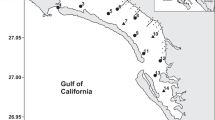Abstract
The life cycle impact assessment (LCIA) is a standard tool for the study of the environmental impact on a system including all activities in connection with manufacturing a product or detailing a service, from extraction of raw materials to disposal of final waste. Here, the system is not only anthropogenic, but also includes both natural behaviours and pollution aspects from human activity: it is a coastal lagoon with varied activities and waste disposals nearby. This stagnant zone is highly subjected to solar exposure and tends to dryness during summer, thus offering ideal conditions to algal proliferation. We have taken into account the trophic state of the lagoon assessed by the LCIA methodology, on the basis of the aquatic eutrophication potential (AEP). We have considered the concentrations of the phosphorus and nitrogen compounds for the calculation of the AEP and their spatial and temporal variations in the lagoon. The results show that the AEP of the phosphorus exceeds systematically the AEP of nitrogen and that the contents of both are systematically higher in summer than in winter. Nitrogen is the limiting factor for the algae growth. Ammonia and phosphates are the most important nutrients for the AEP in summer, whereas nitrates dominate in winter. In addition, the spatial and temporal variations of the N and P nutrients of the surface waters allow to distinguish three areas in the lagoon: a transition zone between the sea- and the lagoon waters; a zone reflecting directly the influence of the O. Bey creek- and the treated-waste waters and one representing the most isolated part of the lagoon and consequently the less contaminated by nutrient inputs.









Similar content being viewed by others
References
Dell’Anno A, Mei ML, Pusceddu A, Danovaro R (2002) Assessing the trophic state and eutrophication of coastal marine systems: a new approach based on the biochemical composition of sediment organic matter. Mar Poll Bull 44:611–622
Correll DL (1998) The role of phosphorus in the eutrophication of receiving waters—a review. J Environ Quality 27:261–266
Finnveden G, Potting J (1999) Eutrophication as an impact category. Int J LCA 4(6):311–314
Grouzet P et al (1999) Nutrients in European ecosystems.European Environment Agency. Environmental Assessment Report Nr.4, Copenhagen, Denmark
ISO (1997) Management environnemental—Analyse du cycle de vie- Principe et cadre. ISO 14040, 1997
ISO (1998) Management environnemental—Analyse du cycle de vie—Définition de l’objectif et du champ d’étude et analyse de l’inventaire. ISO 14041, 1998
ISO (2000) Management environnemental—Analyse de cycle de vie—Evaluation de l’impact du cycle de vie. ISO14042, 2000
ISO (2000) Management environnemental—Analyse du cycle de vie—Interprétation du cycle de vie. ISO 14043, 2000
Krempp G (1988) Techniques de prélèvement des eaux naturelles et des gaz associés. Méthodes d’analyses des eaux et des roches.79p
Newton A, Icely JD, Falcao M, Nobre A, Nunes JP, Ferreira JG, Vale C (2003) Evaluation of eutrophication in the Ria Formosa coastal lagoon, Portugal. Cont Shelf Res 23:1945–1961
Nixon SW (1995) Coastal marine eutrophication: a definition, social causes, and future concerns. Ophelia 41:199–219
Sakshaug E, Holm-Hansen O (1977) Cemical composition of Skeletonema costatum (Grev.) Cleve and Pavlova (Monochrysis) Lutheri (Droop) Green as a function of nitrate-, phosphate-, and iron- limited growth. J Exp Mar Biol Ecol 29:1–34
SETAC (1991) A technical framework for life-cycle assessment. In: Fava J, Denisson R, Jones B,Vigon B, Curran MA, Selke S, Barnum J (eds) August 18–23, Smugglers Notch, Vermont. Washington, DC January 1991
SDAGE (1996) Eutrophisation des milieux aquatiques: Bilan des connaissances et stratégies de lutte. Note technique N2:29
Udo de Haes H, Jolliet O, Finnveden G, Goedkoop M, Hauschild M, Hertwich E, Hofstetter P, Klopffer W, Krewitt W, Lindeijer E, Mueller-Wenk R, Olson S, Pennington D, Potting J, Steen B (2002) Life-cycle impact assessment: striving towards best practices. SETAC Pensacola FL, USA, 272p
Vollendweider RA, Giovanardi F, Montanari G, Rinaldi A (1998) Characterisation of the trophic conditions of marine coastal waters with special reference to the NW Adriatic Sea: proposal for a trophic scale, turbidity and generalised water quality index. Environmetrics 9:329–357
Author information
Authors and Affiliations
Corresponding author
Rights and permissions
About this article
Cite this article
Hadj Amor, R., Quaranta, G., Gueddari, F. et al. The life cycle impact assessment applied to a coastal lagoon: the case of the Slimane lagoon (Tunisia) by the study of seasonal variations of the aquatic eutrophication potential. Environ Geol 54, 1103–1110 (2008). https://doi.org/10.1007/s00254-007-0881-9
Received:
Accepted:
Published:
Issue Date:
DOI: https://doi.org/10.1007/s00254-007-0881-9




